25 Underrated Books on Persuasion, Influence, and Understanding Human Behavior


Reading good books remains the supreme “life hack”—knowledge that often took years to assemble can be consumed in mere hours.
I can’t think of a single better way to empower your learning (and yourself) than that. And as a professional, executive, or entrepreneur, the more you know about how people tick, the better.
The problem is that when looking for new reads, lists are often populated with books that everybody already knows about. How many more recommendations of Cialdini’s Influence do you need before you’re sick of seeing it?
As a voracious reader of brainy books on influence and persuasion (not limited to academic coverage), I thought I’d mix things up with a few underrated suggestions that you won’t see on most bookshelves.
Try the customer support platform your team and customers will love
Teams using Help Scout are set up in minutes, twice as productive, and save up to 80% in annual support costs. Start a free trial to see what it can do for you.
Try for free
1. The Person and the Situation
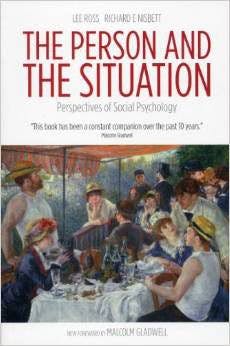
In my opinion, this is the best book Malcolm Gladwell’s name has been attached to. It’s one of the definitive works in social psychology, perhaps only eclipsed by Eliot Aronson’s The Social Animal.
The authors combine thorough, academic insights with highly relatable writing. An odd, but perhaps accurate, way to describe it is that it’s like a college textbook that you actually want to read!
The reviews seem overly positive, but frankly, they are warranted. One of my favorites:
“I felt that I had a better grasp of social psychology after reading this book than I did after taking a year of PhD level courses.”
2. Yes! (50 Scientifically Proven Ways to be Persuasive)
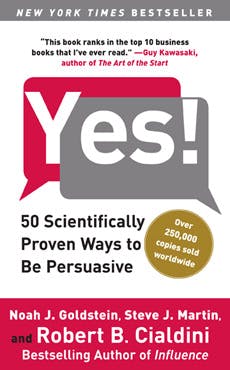
Don’t get me wrong, I really enjoyed this book, but just be forewarned that this should be used as a complement to the other “meatier” entries on this list.
While the book is informative, the studies are glossed over pretty quickly and not much depth is given to any individual study. It does make for a great “rabbit hole” read: you’ll find out about a study, look up more about it, find more related studies, and “fall down the rabbit hole” searching for new material.
This is a great starting point to getting your feet wet in a variety of persuasion-related studies.
3. Creative Advertising

In this book, Pricken gives a step-by-step breakdown of effective ads, doing a wonderful job of explaining why these ads are so impactful. It might be the book I’ve recommended to marketers most often in the recent months.
It’s beautifully designed, and you’ll get a candid look at the ads themselves—oh, how I love when theory is thrown out the window in favor of real-world examples.
4. The Art of Human Hacking

While this book specifically addresses social engineering (surprise!), there are many psychological aspects that turn this into a very intriguing read on influence.
The book has a somewhat antagonistic tone, but it fits with the subject matter. People are referred to as “victims” and the activities are defined as “exploits” and “attacks” because that is what is being analyzed.
But that shouldn’t dissuade you from reading it—it’s like watching those shows where a former thief shows the homeowners how easy it was to break into their house. Here, though, the lock-picking is substituted for human manipulation. This is not a book you read to copy specific methods; it’s one you read in order to understand.
5. The Psychology of Attitude Change and Social Influence

To sum up this book in a single phrase, I would call it a more academic Influence. It takes a very scholarly approach to the psychology of influence, but is perhaps a little bit less practical than Cialdini’s work.
For a true academic understanding of persuasion, though, this book is fantastic. It came highly recommended from a former professor of mine, and I’m glad I picked it up.
6. Fascinate: Your 7 Triggers to Persuasion and Captivation

I’ll avoid the too awful pun of calling this book “fascinating.”
Here, Sally Hogshead explains how elements such as storytelling and modelling hold such a powerful influence, and she leaves readers with practical game plans to captivate attention.
I have two comments on Hogshead’s writing: the first is a slight critique, in that the book often tries to take established ideas and make them sound entirely new.
The second is full of praise: you only want to title a book Fascinate if it’s a page-turner, and Sally’s writing will definitely hook you until the end.
7. Numbers Rule Your World
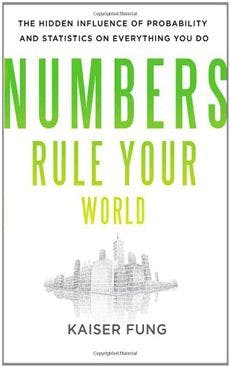
This book is probably the most unique of all of the books I’m recommending here.
It straddles statistics, persuasion, and psychology, and through clear writing, addresses what could be an incredibly boring topic for some readers (the application of statistics and how they affect you) and turns it into a really easy read.
I approached this book expecting to slowly crawl through it, but there are a ton of great examples and Fung does an enviable job of using stories to get his points across.
Whether you’re a “numbers guy” (or gal) or just want to take a layman’s look at statistics and their involvement in current affairs, this book is one you’ll enjoy.
8. Neuromarketing: Understanding the Buy Buttons in Your Customer’s Brain
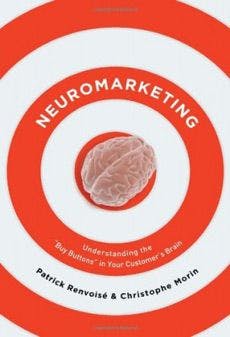
This is one of the best beginner books for those interested in neuromarketing, in addition to Roger Dooley’s Brainfluence.
Two things to consider: the book is a very easy read; studies are not cited in-depth and the content can be easily consumed. However, if you’re not new to this space, the coverage may be too simplistic.
If you’re looking for an introduction and you haven’t read the perennial classics like Influence yet (there’s one more reference for you), this makes for a solid read.
9. The Advertised Mind
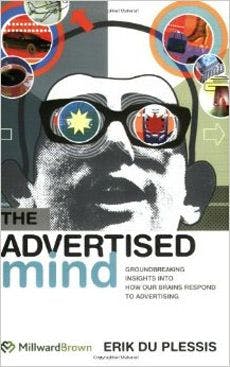
This book is not an easy read. That being said, it is a rewarding one if you can make it through.
Du Plessis makes compelling arguments and often delves into philosophical territories—not for the faint of heart, to be certain!
However, this is incredibly sharp coverage of the intersection between neuroscience and advertising.
One reviewer called it the book where “cognitive science meets Madison Avenue”—a fitting description that actually reveals quite a lot of what you’re about to get into.
10. Brandwashed

This is one of those intriguing crosses between understanding marketing to utilize it for your entrepreneurial endeavors and simply understanding how brands try to persuade you.
Some of the examples aren’t so mind-blowing (grocery stores using crates to make fruit seem “farm-fresh”), but others are really interesting.
I wish Lindstrom had done a bit more analysis on each study, as he seems to just take each at face value. That being said, the studies cited are genuinely interesting and very revealing in how easy it is for marketers to trick us (for shame!).
11. The Compass of Pleasure
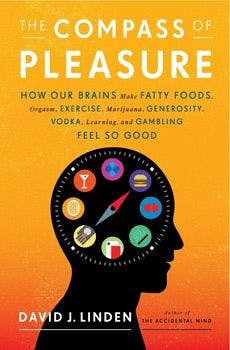
Get a load of this subtitle:
How Our Brains Make Fatty Foods, Orgasm, Exercise, Marijuana, Generosity, Vodka, Learning, and Gambling Feel So Good
This is a methodical, academic approach to answering questions like why cigarettes are so addictive.
Though the book is pitched as a guide to understanding the nature of addiction, one will walk away with a general understanding of persuasion and habit-forming products.
12. The Buying Brain
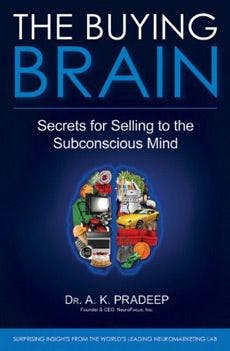
There is another book by Lindstrom called Buyology that often comes highly recommended when discussing books of this ilk, but I would say that you should skip that book and get this one instead.
Pradeep creates a great overview of the emerging neuromarketing space and does so with a lot of good concrete examples.
I enjoyed that specifically because many books simply cite the research at hand; as a guy who regularly reads research papers, I appreciate the exposure to new research, but I could have just read it myself.
This book avoids that by taking the extra step through potential methods of implementation; loathe though I am to call things “actionable,” it’s appropriate in this instance.
13. The Lucifer Effect
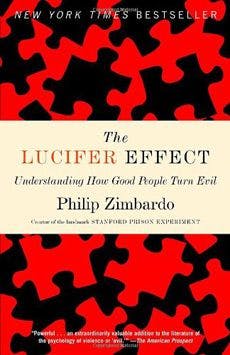
This book focuses on the findings from the legendary Stanford prison experiment.
If that research has fascinated you in any way, you need to check this book out. It essentially offers an inside look at much of the data from the study, including transcripts.
It’s a compelling look at how even “normal” people fall into certain roles in situations that many of us can hardly imagine happening (or would like to deny).
The last chapter is also quite intriguing for those familiar with the experiment: the author outlines a program intended to build resistance to mind-control strategies.
Scary stuff, but a compelling, eye-opening read.
14. Obedience to Authority

This is another “tell-all” about the fascinating, provocative, and horrifying psychology study known as the Milgram experiment (after the lead researcher).
If you are unfamiliar with the study, it was meant to test whether or not people would obey authority even when they were asked to do something that they knew was wrong (in this case, shocking other participants, or at least believing they were).
It details many accounts of participants showing signs of severe distress, yet continuing on with the applied shocks as actors in another room (pretending to be other subjects) screamed in pain.
This book is a necessary read in understanding the construct and dangers of absolute obedience to authority—consider these entries the “safety manuals” to persuasion and influence.
15. Out of Character
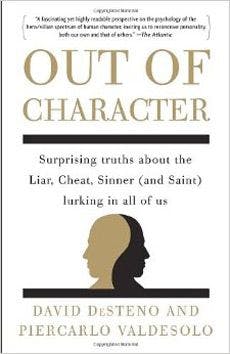
Just what exactly is happening when someone “breaks” character?
Is character even concrete, or is it more like a shade of gray?
I found this book really fascinating in its singular focus on character and the psychology of how external events impact it.
“Normal” life (not necessarily a boring life, but one less extreme by comparison) often makes it difficult to understand these extreme acts, and this book takes a look at a lot of examples that show us that if we were in similar circumstances, we’d be very likely to act in a similar manner.
Great examples, great research, and a great focus make this a must-read.
16. Strangers to Ourselves

If these books about the brain teach us anything, it’s probably this: Your conscious mind isn’t always in control.
This book is one of the biggest jolts in this category of understanding that concept; it’s definitely a psychology book, but it delves into the realm of philosophy as well.
Frankly, I didn’t find the research as compelling as some other similar books, but the questions raised by Wilson are by far some of my favorites.
17. Sleights of Mind
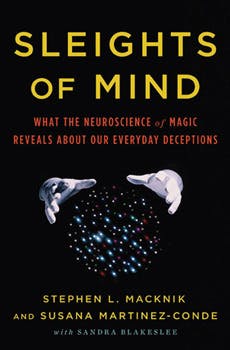
The main issue this book tackles is how we are influenced, with the authors taking a very specific look at the illusions of “magic” and some related neuroscience studies.
This book reads like “The Psychology of Magic”, and if that sounds interesting to you, this is a must-read.
As for practicality, I would say this book is another one of those books that is about understanding, and through this understanding there are some practical applications to be had.
That being said, to me it was decidedly interesting, and it’s one of the most unusual books on this list.
18. Why We Buy
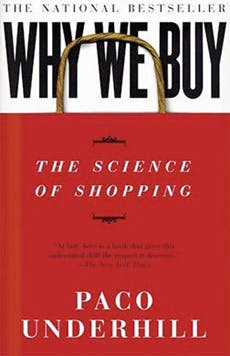
I’ll agree with the many reviewers of this book that it ends…uneventfully, shall we say. It gets very sales-y for the author’s company, which was a huge letdown.
The rest of the book is exceptional. It’s interesting to see some actual data on how people shop. Some of the examples definitely left me fascinated, especially in areas of business where I’m clueless, such as product placement in grocery stores.
19. The Invisible Gorilla
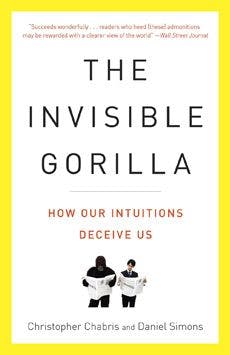
A book dedicated to revealing the myriad ways that our intuitions can deceive us; but it is much more than a mere catalog of human failings.
Chabris and Simons explain why we succumb to these everyday illusions and what we can do to inoculate ourselves against their effects.
It is a combination work of multiple researchers, with a breadth of findings on attention, perception, memory, and reasoning, all of which reveal how faulty intuitions often get us into trouble.
The name of the book is based on this notorious video on selective attention:
20. Methods of Persuasion
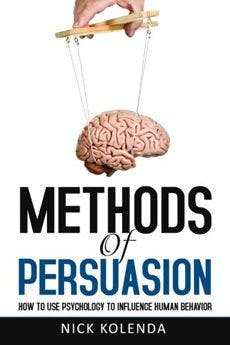
A sharp read on consumer motivation, backed with relevant, tested cognitive research.
The premise of the book is the development of the METHODS strategy, consisting of the following step:
Mold Their Perception
Elicit Congruent Attitudes
Trigger Social Pressure
Habituate Your Message
Optimize Your Message
Drive Their Momentum
Sustain Their Compliance
The language used, as with many marketing books, is off-putting at first, but the proposed application is ethical and fitting for all marketers.
21. Confessions of an Advertising Man

As is the case for the now notorious Breakthrough Advertising, this book contains deep insights into psychology, sans-scientific research.
It’s not needed when the centerpiece of the book is Ogilvy’s laudable career as one of the industry’s greatest ad men.
Read it in conjunction with the other perennial classic, Scientific Advertising, and you’ll have lessons from two of the most vaunted books in marketing/copywriting of all time.
Essential for those seeking to understand and practice the art of persuasion.
22. The Silent Language of Leaders

I never would’ve thought I’d recommend a book with “body language” in the subtitle, but Dr. Carol Goman has written what has to be the best coverage of psychological insights applied to in-person communication.
The role of a leader is one that requires the ethical use of persuasion to bring out the best amidst an often highly variable team. How you communicate becomes just as important as what you communicate.
Dr. Goman’s work offers some pragmatic, fluff-free advice on better communication that can bring out the “last 10%” in people that makes good employees great.
23. Getting to Yes
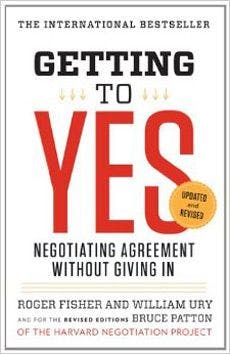
This is a stellar read on utilitarian negotiation tactics; though the references may be dated (the original edition was published 30 years ago), the application stands the test of time.
Nearly required reading for sales and customer success teams, but beneficial for anyone with a passing interest on getting beyond “negotiation for dummies.”
24. The Art of the Pitch
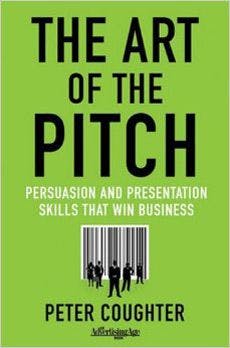
The thought of making an elevator pitch is scary for many people.
While you may never enter a high pressure situation exactly like that in your career, there will almost always be times where you need to “sell” an idea—even if it’s a good one.
This book makes some astute and very level-headed observations on what elements really make up a successful pitch.
You don’t need to be a startup founder about to pitch to an angel to make a sale, but if you are, definitely pick up this book and then watch this spoof video to calm your nerves:
25. Selling the Invisible
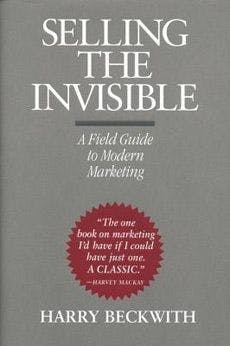
To the right reader, this book will be worth its weight in gold.
Selling services—“the invisible”—hasn’t been thoroughly addressed in some of the more exceptional books on selling that I’ve read, such as SPIN Selling, or The New Strategic Selling.
If you work in an agency or consultancy or your business is selling services/productized consulting, you’ll find this information invaluable, especially when weighed against other books on selling.
Those selling products should refer to the two books I mention above; those in the service industry, this is the book you’ve been waiting for.
Not enough? We’ve got more suggestions…
It’s been a privilege sharing great books with you all; it’s fitting that this has practically turned into a recurring series for us.
If you missed our earlier articles, be sure to check out 25 cult-classic books for entrepreneurs and our coverage on 27 customer service books everyone should read.
The Supportive Weekly: A newsletter for people who want to deliver exceptional customer service.